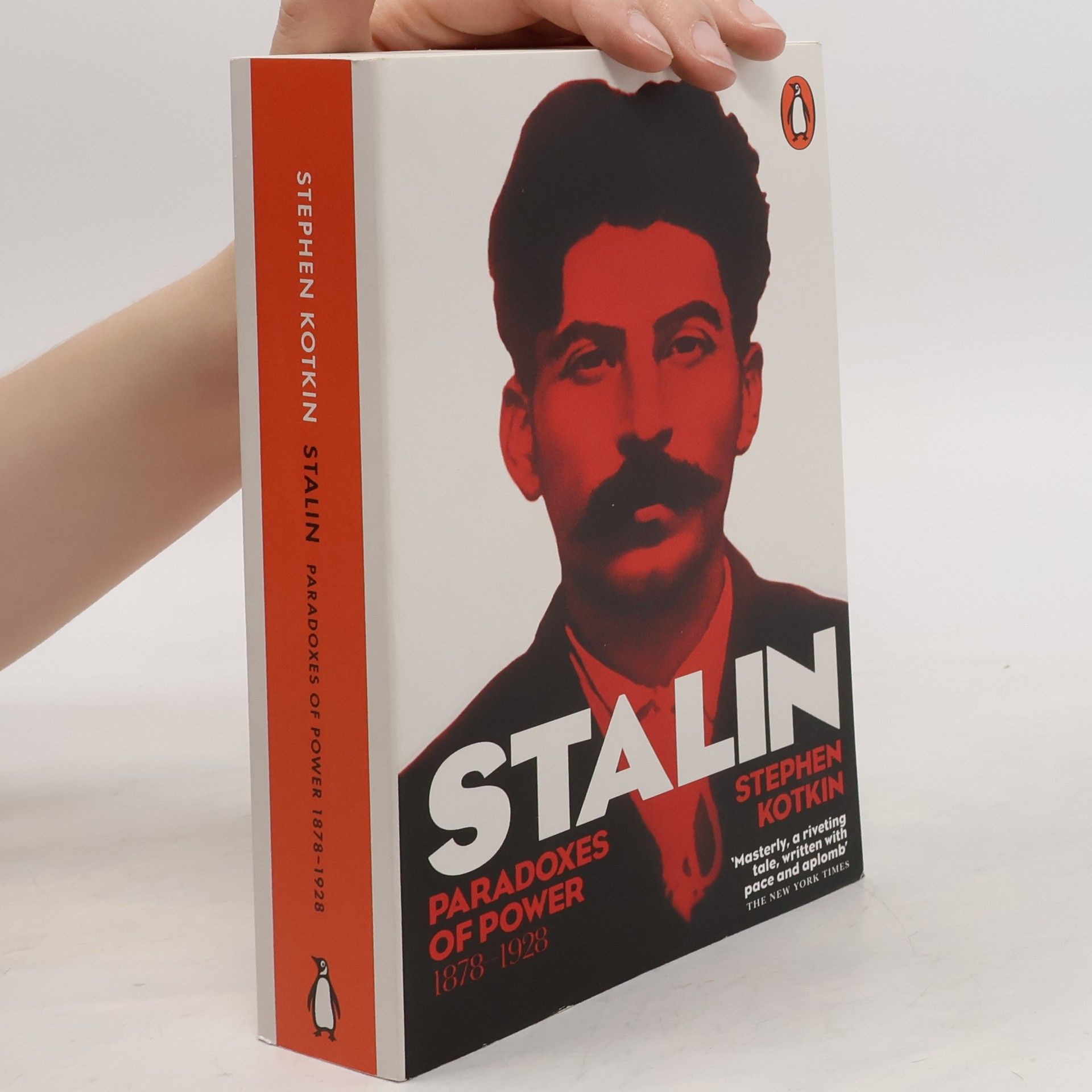Stephen Kotkin Book order
Stephen Kotkin specializes in the history of the Soviet Union and is increasingly researching Eurasia more broadly. His expertise lies in deeply analyzing historical processes and their impacts. As a professor of history and director of Russian Studies at Princeton University, he brings academic rigor to his research. His work offers readers a compelling insight into the key periods and dynamics of Russian and Eurasian history.







- 2025
- 2024
Сталин. Том 1. Книга 1
Парадоксы власти. 1878–1928
- 2024
In 1992, after the collapse of the Soviet Union, the Hoover Institution began a historic twelve-year effort to microfilm and publish the records of the Soviet Communist Party and State--ten million pages of newly opened archives documenting the history of Soviet communism.
- 2021
Magnetická hora : stalinismus jako civilizace
- 760 pages
- 27 hours of reading
Kotkinovy dějiny Magnitogorsku jsou monstrózní mikrohistorickou sondou do stalinské každodennosti. V polovině dvacátých let se kolem Magnetické hory rozkládala pustá step. O pár let později tu již stálo gigantické průmyslové centrum pulzující životem. Jak se to mohlo stát? Jací lidé se k tomuto místu vydali a budovali jej? A proč? A jak v krajině bičované mrazivými větry dokázali přežít a zabydlet se? Stephen Kotkin si všímá každičkého detailu životů magnitogorských obyvatel. Strašlivé zimy, vítr, nehygienické životní podmínky, tvrdá práce na vysokých pecích, volnočasové aktivity, bytová nouze, šmelina, zburžoaznění městské stranické elity, udávání, teror konce třicátých let atd. – Kotkinově pozornosti neunikne nic. Jeho magnitogorská sága inspirovaná Michelem Foucaultem bezesporu započala novou fázi ve výzkumu sovětských sociálních dějin.
- 2018
Stalin: Waiting for Hitler, 1929-1941
- 1184 pages
- 42 hours of reading
In 1929, Joseph Stalin, having already achieved dictatorial power over the vast Soviet Empire, formally ordered the systematic conversion of the world's largest peasant economy into "socialist modernity," otherwise known as collectivization, regardless of the cost. What it cost, and what Stalin ruthlessly enacted, transformed the country and its ruler in profound and enduring ways. Building and running a dictatorship, with life and death power over hundreds of millions, made Stalin into the uncanny figure he became. The wholesale collectivization of some 120 million peasants necessitated levels of coercion that were extreme even for Russia, and the resulting mass starvation elicited criticism inside the party even from those Communists committed to the eradication of capitalism. But Stalin did not flinch. By 1934, when the Soviet Union had stabilized and socialism had been implanted in the countryside, praise for his stunning anti-capitalist success came from all quarters. Stalin, however, never forgave and never forgot, with shocking consequences as he strove to consolidate the state with a brand new elite of young strivers like himself. Stalin's obsessions drove him to execute nearly a million people, including the military leadership, diplomatic and intelligence officials, and innumerable leading lights in culture. While Stalin revived a great power, building a formidable industrialized military, the Soviet Union was effectively alone and surrounded by perceived enemies. The quest for security would bring Soviet Communism to a shocking and improbable pact with Nazi Germany. But that bargain would not unfold as envisioned. The lives of Stalin and Hitler, and the fates of their respective dictatorships, drew ever closer to collision, as the world hung in the balance
- 2017
Masterly, a riveting tale, written with pace and aplomb. [of volume one] New York Times
- 2015
Stalin
- 976 pages
- 35 hours of reading
In January 1928 Stalin, the ruler of the largest country in the world, boarded a train bound for Siberia where he would embark upon the greatest gamble of his political life. He was about to begin uprooting and collectivization of agriculture and industry across the entire Soviet Union. This book offers an explanation yet of Stalin's power.
- 2014
Stalin. Vol.1
- 976 pages
- 35 hours of reading
In his biography of Stalin, Kotkin rejects the inherited wisdom about Stalin's psychological makeup, showing us instead how Stalin's near paranoia was fundamentally political and closely tracks the Bolshevik revolution's structural paranoia, the predicament of a Communist regime in an overwhelmingly capitalist world, surrounded and penetrated by enemies. At the same time, Kotkin posits the impossibility of understanding Stalin's momentous decisions outside of the context of the history of imperial Russia.
- 2010
Uncivil Society
- 256 pages
- 9 hours of reading
Twenty years ago, the Berlin Wall fell. In one of modern history’s most miraculous occurrences, communism imploded–and not with a bang, but with a whimper. Now two of the foremost scholars of East European and Soviet affairs, Stephen Kotkin and Jan T. Gross, drawing upon two decades of reflection, revisit this crash. In a crisp, concise, unsentimental narrative, they employ three case studies–East Germany, Romania, and Poland–to illuminate what led Communist regimes to surrender, or to be swept away in political bank runs. This is less a story of dissidents, so-called civil society, than of the bankruptcy of a ruling class–communism’s establishment, or “uncivil society.” The Communists borrowed from the West like drunken sailors to buy mass consumer goods, then were unable to pay back the hard-currency debts and so borrowed even more. In Eastern Europe, communism came to resemble a Ponzi scheme, one whose implosion carries enduring lessons. From East Germany’s pseudotechnocracy to Romania’s megalomaniacal dystopia, from Communist Poland’s cult of Mary to the Kremlin’s surprise restraint, Kotkin and Gross pull back the curtain on the fraud and decadence that cashiered the would-be alternative to the market and democracy, an outcome that opened up to a deeper global integration that has proved destabilizing.



